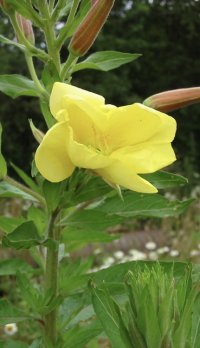No photo unfortunately as I was out running. But I came across a tall (4 foot?) plant which I had figured was a willowherb, and chalky moderately dry ground. Similar structure and appearance to rosebay willowherb and lanceolate leaves. But today it has flowered; a big spray of yellow flowers. Any suggestions as to what this might be? I know I should hold off posting until I can go back to get a photo, but it is bugging me.
Help with a yellow flowering plant
- Thread starter Suffolkrafter
- Start date
-
Come along to the amazing Summer Moot (21st July - 2nd August), a festival of bushcrafting and camping in a beautiful woodland PLEASE CLICK HERE for more information.
You are using an out of date browser. It may not display this or other websites correctly.
You should upgrade or use an alternative browser.
You should upgrade or use an alternative browser.
I reckon that's it. Nice one, thank you! I'll get back to it hopefully, and study it in more detail.Sounds a bit like one of the goldenrods such as Solidago canadensis?
The two yellow flowers that are in bloom around here just now are evening primroses, but they have large showy individual flowers, and the last of the golden rod. The golden rod has stems and leaves much like willowherb and it does produce a spray of flowers.
The native one is also called Woundwort, but it's not the purple one.
It's
 www.magicgardenseeds.co.uk
www.magicgardenseeds.co.uk
I use it as a dye.
The native one is also called Woundwort, but it's not the purple one.
It's
European Goldenrod / Woundwort (Solidago virgaurea) | The Beautiful | null - Samen & Saatgut
Solidago virgaurea seeds, content: Approx. 500 Goldenrod seeds. Woundwort is applied for bladder and kidney sufferings and is very often found in diuretic teas from the pharmacy.
I use it as a dye.
Now I'm confused 
Whereas I accept that the plant Suffolkrafter has seen is, in all probability, Goldenrod (Solidago virgaurea), that link of yours @Toddy doesn't look anything like the Goldenrod I know; are they sure they've used the correct photo?
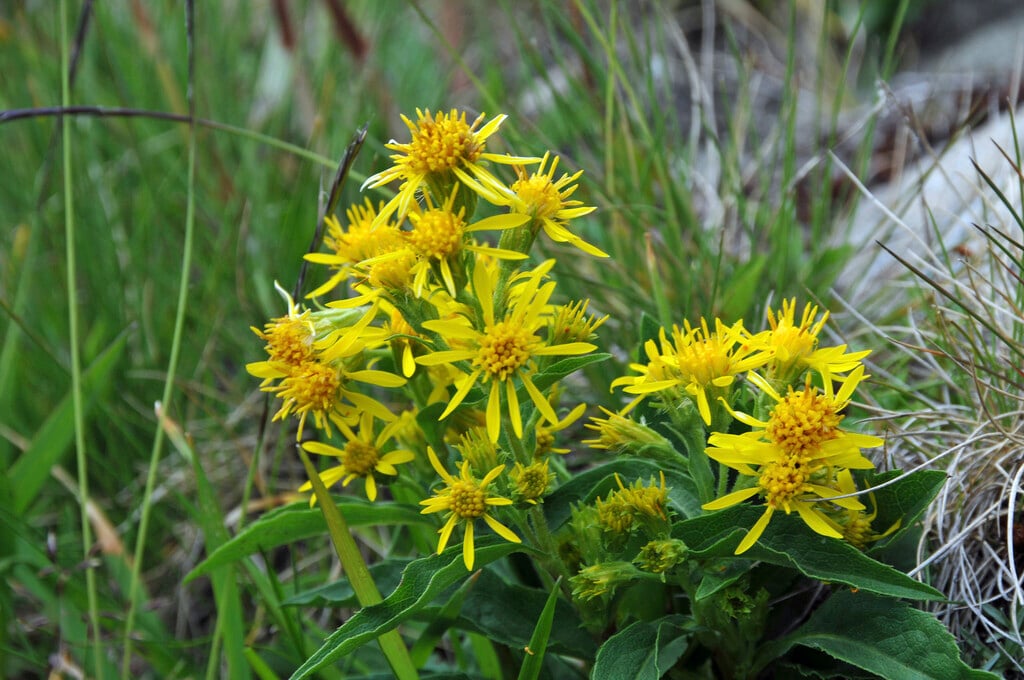
 www.rhs.org.uk
www.rhs.org.uk
As well as the yellow dye that Toddy uses it for it has a wide range of medicinal applications, in particular for fungal infections.
Whereas I accept that the plant Suffolkrafter has seen is, in all probability, Goldenrod (Solidago virgaurea), that link of yours @Toddy doesn't look anything like the Goldenrod I know; are they sure they've used the correct photo?

Solidago virgaurea | goldenrod Herbaceous Perennial/RHS
Find help & information on Solidago virgaurea goldenrod Herbaceous Perennial from the RHS
As well as the yellow dye that Toddy uses it for it has a wide range of medicinal applications, in particular for fungal infections.
So it is either Solidago viagaurea
Or
I.e. Solidago canadensis
Only one thing for it, I need to go for another run!
In any case I've been past it a hundred times (with it never in flower) and always assumed it was rosebay willowherb. So this is a new one for my list
Or
I.e. Solidago canadensis
Only one thing for it, I need to go for another run!
In any case I've been past it a hundred times (with it never in flower) and always assumed it was rosebay willowherb. So this is a new one for my list
My goodness it's way too hot to be out chasing plants, but I suffered for the cause. Based on flower size and leaf shape, I suspect it is canadensis.
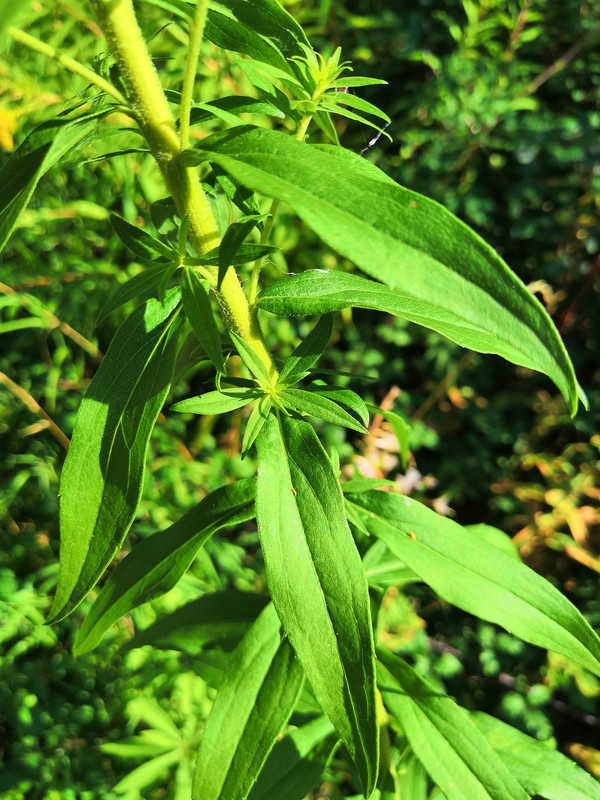
 postimg.cc
postimg.cc

 postimg.cc
postimg.cc
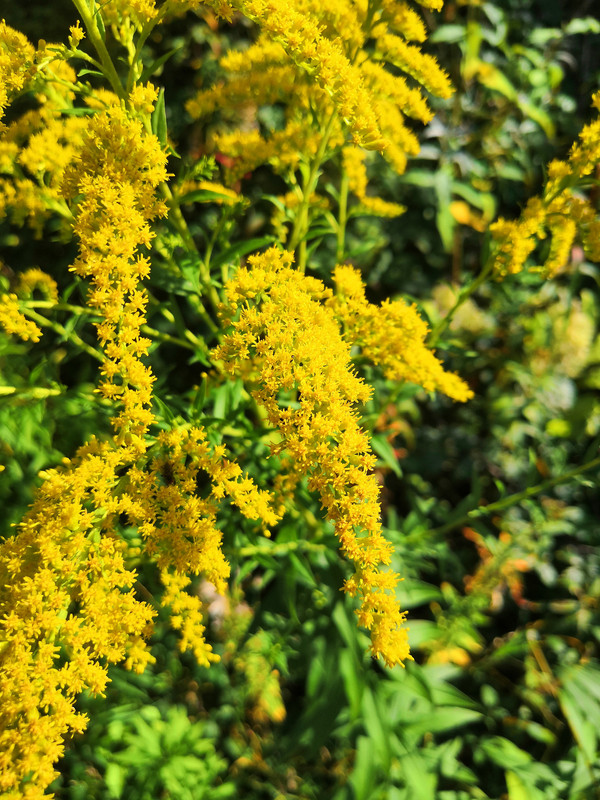
 postimg.cc
postimg.cc
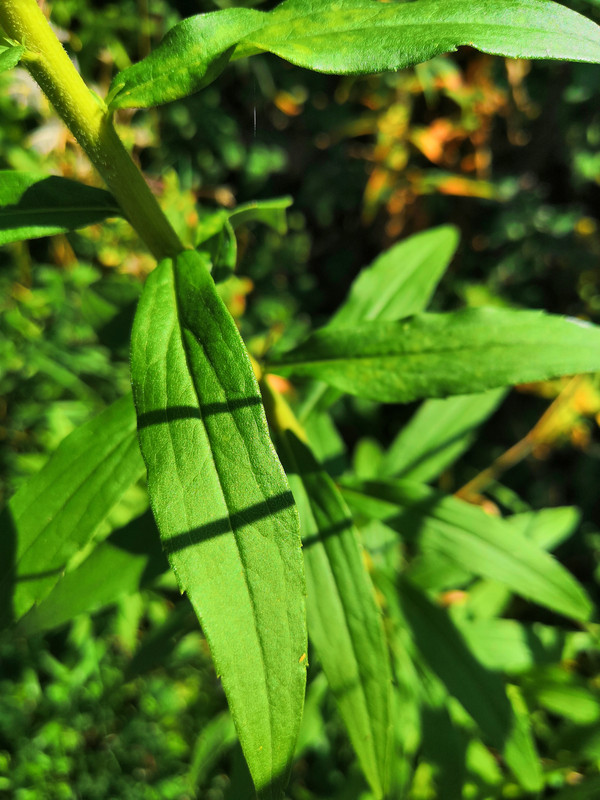
 postimg.cc
postimg.cc

IMG 20230907 121440 — Postimages

IMG 20230907 121517 — Postimages

IMG 20230907 121506 — Postimages

IMG 20230907 121424 — Postimages
I would be careful with the id. I deliberately mentioned canadensis as the are quite a few garden escapees, some of which might be toxic.
Really? In my research I haven't found any Solidago that is considered toxic to browsing animals or humans - in fact the contrary (as far as medicinal use is concerned). I'll have to do more digging (excuse the pun
Last edited:
Geoff Dann's book lists both species as edible. The site I linked to earlier describes Solidago canadensis as containing pyrrolizidine alkaloids. I'd be interested to find out more.
Geoff Dann's book lists both species as edible. The site I linked to earlier describes Solidago canadensis as containing pyrrolizidine alkaloids. I'd be interested to find out more.
Many plants contain pyrrolizidine alkaloids that protects them from insects; in very small quantities it is found in teas and even honey. I would avoid eating any plant that is known to containing it because you don't know the dose you are eating.
Geoff's book is the only one I have found that describes Goldenrod (S.virgaurea or S.canadensis) as edible. To date, I have found no evidence of it being eaten in Britain so it's not on my edibles list.
S.virgaurea:
| Medicinal | Constituents | Utility | Other notes |
| antioxidant, diuretic, astringent, antidiarrhoeic, vulnerary, anti-inflammatory; remedy for urinary tract disorders, nephritis, cystitis, used to flush kidney and bladder stones, the saponins work against Candida fungus (thrush), taken for sore throats, nasal catarrh; leaves expectorant and anti-inflamatory, used to heal wounds | saponins, diterpenes, phenolic glucosides, acetylenes, cinnamates, flavonoids, tannins, hydroxybenzoates, inulin | flowers and leaves produce a yellow dye | use flowering plant summer and autumn |
Now I'm confused
Whereas I accept that the plant Suffolkrafter has seen is, in all probability, Goldenrod (Solidago virgaurea), that link of yours @Toddy doesn't look anything like the Goldenrod I know; are they sure they've used the correct photo?

Solidago virgaurea | goldenrod Herbaceous Perennial/RHS
Find help & information on Solidago virgaurea goldenrod Herbaceous Perennial from the RHSwww.rhs.org.uk
As well as the yellow dye that Toddy uses it for it has a wide range of medicinal applications, in particular for fungal infections.
Now I'm confused, because that make three varieties I know of all called Golden Rod.
The Canadian one which is invasive, with showy sprays of yellow flowers. The European one that grows like the fireweed and throws out sprays like that site shows, and the third one, also European, with sort of individual flowers but clusters of them almost like an aster. The leaves grow among the flowers in that one. I think it's also known as Himalayan golden rod.
They all give dye, but the European one with sprays gives the better colour. The latter one is the one picked for tea/ointment.
Many plants contain pyrrolizidine alkaloids that protects them from insects; in very small quantities it is found in teas and even honey. I would avoid eating any plant that is known to containing it because you don't know the dose you are eating.
Geoff's book is the only one I have found that describes Goldenrod (S.virgaurea or S.canadensis) as edible. To date, I have found no evidence of it being eaten in Britain so it's not on my edibles list.
S.virgaurea:
Medicinal Constituents Utility Other notes antioxidant, diuretic, astringent, antidiarrhoeic, vulnerary, anti-inflammatory; remedy for urinary tract disorders, nephritis, cystitis, used to flush kidney and bladder stones, the saponins work against Candida fungus (thrush), taken for sore throats, nasal catarrh; leaves expectorant and anti-inflamatory, used to heal wounds saponins, diterpenes, phenolic glucosides, acetylenes, cinnamates, flavonoids, tannins, hydroxybenzoates, inulin flowers and leaves produce a yellow dye use flowering plant summer and autumn
Interesting about the honey, I guess the bees must accumulate it via the nectar, depending on what plants they are tending to.
It won't be on my edibles list either.
The Solidagos are not native to Europe but were introduced from North America about 250 years ago, leastwise that's what the references here in France state.
Same family as Asters.
Same family as Asters.
Well, here S.virgaurea is classified as a native - here before the Dogger flooded. Rose and Harrap have it listed as native.

